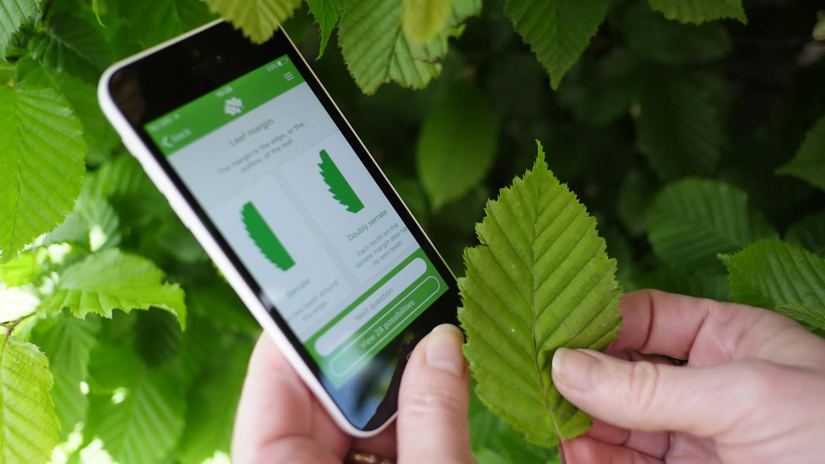
Credit: Nature Photographers Ltd / WTML
Leaves
Alternate, oval, pointed leaves with toothed edges and long stalks. The leaves are light green in spring, turning to gold and then black in autumn.
First introduced around AD 995, the diverse and delicious pear is a favourite with wildlife and people alike.
Common names: pear, domestic pear, common pear, European pear
Scientific name: Pyrus communis
Family: Rosaceae
Origin: non-native
Pear trees are deciduous and usually grow to about 12m, though some can reach up to 20m. The crown of the tree is domed and the branches can have spiny twigs. The bark is grey-brown and broken into small square shapes.
Look out for: the grey-brown bark which has a square-shaped pattern.
Identified in winter by: their twigs which are very spiny.

Credit: Nature Photographers Ltd / WTML
Alternate, oval, pointed leaves with toothed edges and long stalks. The leaves are light green in spring, turning to gold and then black in autumn.

Credit: Design Pics Inc / Alamy Stock Photo
Flowers are white throughout and appear in clusters up to 3cm across.

Credit: Clare Gainey / Alamy Stock Photo
The fruits grow on long stalks and ripen to a golden yellow colour with sweet, grainy-textured flesh.
Plymouth pear (Pyrus cordata) which is a very rare species found only in two locations around Plymouth and Truro. Plymouth pear fruit is brown and woody unlike juicy domestic pears.

Download our free Tree ID app for Android and iPhone to identify the UK's native and non-native trees. It's an A-Z tree guide in your pocket.
Download the appThere are over 3,000 varieties of pear grown around the world.
Pear trees are native to southern, central and western Europe and grow best in light, deep soils in a mild climate. They have been grown in gardens and orchards throughout much of the UK since AD 995 and many cultivars now exist. Naturalised or wild pear (Pyrus pyraster) trees can be found in hedges, woodland margins, old gardens and on railway banks and waste ground. They spread easily by seed and by discarded cores.

Credit: FLPA / Alamy Stock Photo
The fruit of pear trees is eaten by birds, such as thrush and blackbird, and the flowers are a popular food source for bees. Caterpillars live in the foliage which is a fantastic habitat, providing shelter and sustenance during their transition into moths and butterflies.
Pear trees can live up to 250 years and because of this, the ancient Chinese believed the pear was a symbol of immortality.
Famously, the pear appears in the song the Twelve Days of Christmas, in which a 'partridge in a pear tree' was sent by the subject's true love on the first day of Christmas. Pear trees only feature in the English version of this song.

Credit: Photoakto / Alamy Stock Photo
Pear trees have been cultivated in gardens and orchards to produce sweet, edible fruit. Pears are also used to make cider and can be cooked. The timber, or pearwood, is popular in the construction of woodwind instruments and is also used for wood carving. The wood does not retain colour, smell or flavour and resists warping and splintering, making it a valuable material for kitchen utensils, spoons and stirrers.
Unlike an apple, pears have no hollow at the stem so when they grow they begin as a narrow cylinder and broaden out, creating the well-known 'pear shape'.
Pear trees are prone to a number of infectious diseases, including fungal diseases such as apple and pear scab and bacterial diseases such as fire blight. These affect both leaves and fruit and if left untreated can completely defoliate the trees, leading to death.